Water, water, everywhere…
Camping in the backwoods or traveling through Mexico means you’ll need clean drinking water all day, every day. Even if you’re surrounded by enough civilization that bottled water is readily and cheaply available, it doesn’t hurt to have a portable water filter or purifier for those days when all the stores are closed, or you’re too lazy to go outside, or you see someone filling up empty water bottles from the tap to be resold in stores again. Ew.
Luckily for all of us, portable water filters have actually gotten pretty great recently. And no, I’m not talking about the well-known options that have great marketing and cost hundreds of dollars and don’t filter out viruses dammit. Why do they cost so much if they still let bugs through that’ll kill me!? Argh!
The options I’m talking about are comprehensive filtration devices, with technology so good that they’ll handle even the tiniest of microscopic organisms, which most traditional backpacking filters can’t handle. You can fill up from a stagnant pond in sub-Saharan Africa and you’ll be just fine. And isn’t that lovely?
What kind of water filter or purifier do I need?

This is where it starts getting technical, but the way I look at it, there are three major categories of contaminants worth discussing:
- Chemical: Lead, arsenic, chlorine, and iodine come to mind. These are more often found in tap water than river water, so if you’re traveling abroad (or filtering at home), you’d want something that can help with these. Dirt and dust are important to remove as well, but pretty much every filter on the market will do that. I’m not aware of anything that’ll filter out all chemicals, but carbon filtration is the most common method for handling these, and is quite helpful.
- Bacterial (and bacterially-sized things): These are the most common biological contaminants, and the most important things to filter, whether you’re traveling to another country, or hiking in your own. There are other microorganisms out there that can cause illnesses (such as protozoan cysts, like giardia and cryptosporidium), but they’re similarly sized, so if a filter can handle bacteria, they can handle the other ones too.
- Viral: Viruses, the smallest organisms on earth, bypass most filters. Viruses are pretty rare, and generally only found in rural environments in developing countries. You probably don’t need viral filtration if you’re hiking through North America or Western Europe (which is part of the reason why filters that remove viruses are so rare), but…well, if it can do it, great.
Ideally, you’d want something that can handle all three, and that’s what this list is about. To the best of my knowledge, these are the best portable water purifiers on the market today. Significantly cheaper options exist, they won’t work nearly as well as these.
This list is split into two parts, starting with…
Part 1: If you need total filtration (including viruses)
The following devices offer all-in-one filtration, including large dirt particles, harmful chemicals, bacteria and bacterially-sized microorganisms (like cysts and giardia), and viruses. If you’re going to remote areas in developing countries, viral filtration is important; if you’re hiking around North America or filtering tap water in Western Europe, you probably don’t.
There are certain things they won’t remove (salt, for example), but the options listed here offer the most comprehensive filtration on the market, and you probably won’t find something that does. These will remove all harmful biological contaminants, and certain chemicals, making tap water or river water taste great, and safe to drink.
1) Lifesaver Bottle: $150
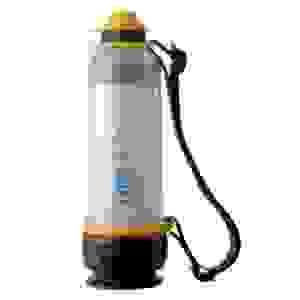
Update: It looks like the Lifesaver will be discontinued. I’m not entirely sure if this is temporary, but I’ll keep this updated if things change.
The Lifesaver Bottle was designed for the developing world, featuring an all-in-one portable water purifier that could provide clean drinking water for the 3 billion people that need it at a total investment of $20 billion. Makes you want to donate, doesn’t it?
As its design goals were simplicity and cost-effectiveness, it happens to suit the needs of backpackers and hikers just as well, and is readily available for purchase by first-world consumers, who are encouraged to participate in a buy-one, donate-one program.
The bottle has a filtration and pump system housed entirely within the bottle, so you pump a few times to press the water through the super-fine filter, and then you can drink. The bottle has a watertight cap, a carrying strap, has completely replaceable parts, and can even handle viruses.
For a while the Lifesaver was far and away the most cost-effective option on the market, though a couple new options have emerged that are lighter, don’t require pumping, and don’t need to be submerged upside down in a river to fill it up, like the Lifesaver does; but it’s still quite good.
The following numbers are estimates for the $150 Lifesaver Bottle 4000, with a limit of 4000 liters, and assume high-frequency replacement of carbon filters, available in $30 packs of 4 which treat 250 liters each. The 6000 liter version and carbon filter value packs can reduce the long-term costs listed below by about half.
- Unit price: $150 (4000 liter version)
- Replacement parts: $100 per cartridge, $8 per carbon filter, $6 per pre-filter
- Lifespan: 4000 liters (carbon filters need more frequent replacement)
- Initial water treatment cost: $0.06 per liter
- Recurring water treatment cost (replacement cartridges + filters): $0.05 per liter
- Empty weight: 22 ounces (623 grams)
Buy it here.
2) The Grayl Ultralight: $60
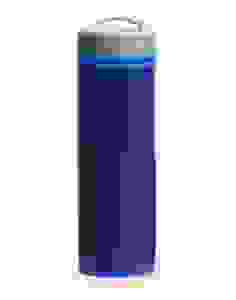
Frequently referred to as the Holy Grail of water purifiers (doesn’t everyone love puns?) the Grayl was designed by someone who got tired of drinking from sporty bottles with gigantic logos and flashy colors. This one offers the same great filtration performance as anything else you’ll find, but without the need for pumping, sucking, squeezing, or waiting.
The filter mechanism works like a French press; you fill up the lower chamber, and press the upper unit down into it. It takes about 15 seconds, after which you can drink just like you would from a regular bottle, without having to suck up the water through a straw. It also means you can pour out purified water into a cup for a friend, or fill up spare bottles for a long trip, and you’ll be hauling clean water around with you, instead of dirty water.
The Grayl has multiple filter unit options which can be swapped out according to your needs, including a low-cost tap water filter, or the top-of-the-line Purifier cartridge, which can handle viruses (removing 99.9999% of them), and 99.9999% of bacteria, along with other microorganisms and chemicals, with a 150 liter lifespan. From what I have seen, its filtration quality is the best of anything on this list.
The numbers below are for the Purifier cartridge, which is what you’d want for outdoor backpacking or international travel.
Full disclosure: They’ve provided me with some free test samples, and, years after the reviews, made me a revenue-sharing offer as well. But I like it a lot. Check out a very in-depth review here.
- Unit price: $60
- Replacement parts: $25 per cartridge (Purifier)
- Lifespan: 150 liters
- Initial water treatment cost: $0.40/liter
- Recurring water treatment cost (top-of-the-line Purifier unit): $0.16/liter
- Empty weight: 10.9 ounces (309 grams)
Buy it from TheGrayl.com.
3) Aquamira Frontier Bottle (Red Line): $50
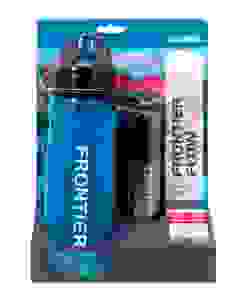
This is a recent upgrade to a previous Aquamira bottle; the new ones adds viral protection (in addition to chemical and bacterial and other microorganisms), making it seriously effective anywhere in the world.
Because it’s a recent modification to the Aquamira lineup, you’ll need to make sure it specifies viral protection (if that’s what you need, of course), and the replacement filters will be labelled Red Line. The bottle has other replacement filters, such as Green Line, but that’s for non-viral filtration (good for hiking in North America, and significantly cheaper, so it’s useful that you can swap them out as needed).
The numbers listed here are for the Red Line filter, to provide a direct cost comparison with the other top-of-the-line filters listed here, and the numbers are pretty great. It removes chemicals, 99.9999% of bacteria, and 99.999% of viruses and other microorganisms, with a 450 liter lifespan. The squishy straw is the type of thing that might need to be cleaned out every once in a while, but that’s true of most bottles anyway.
Full disclosure: The manufacturer has provided me with a few test products (though not this particular item), but all these numbers are accurate.
- Unit price: $50
- Replacement parts: $40 per cartridge (Red Line filter)
- Lifespan: 450 liters
- Initial water treatment cost: $0.11 per liter
- Recurring water treatment cost (cartridges): $0.08 per liter
- Empty weight: 5.6 ounces (158 grams)
Get it here.
They also make an in-line filter for attaching to a hydration bladder hose, which offers the same virus-removing performance, and is (at the moment) the only one I know of that does that.
4) Water to Go Bottle: $40 (approximately)
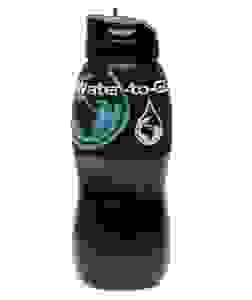
This is another one that might require overseas shipping, depending on where you live, but even with British pound conversion and international shipping costs, it’s still rather affordable.
The Water to Go Bottle removes 99.9% of biological contaminants (including viruses) and certain harmful chemicals, using a NASA-developed technology that removes particles from the water without using a “real” filter, but through a process called adsorption, though it also includes a carbon component for soaking up chemicals.
(The site claims it removes 99.9% of all microbiological contaminants, but elsewhere on the site they’ve listed the test results, which put both virus and bacterial removal at 99.9999%, and other types at 99.99%. I’m not sure what the 99.9% refers to.)
There’s a smaller bottle available as well, but the numbers here are for the one in the photo. Prices on their site are listed in British pounds, and the numbers here assume a conversion rate of 1 British pound equal to 1.5 American dollars, and don’t take into consideration the international shipping costs:
- Unit price: $37.50
- Replacement parts: $13.5 per cartridge
- Lifespan: 200 liters
- Initial water treatment cost: $0.18 per liter
- Recurring water treatment cost (cartridges): $0.067 per liter
- Empty weight: 4.8 ounces (138 grams)
Get it here.
5) Katadyn MyBottle: $60
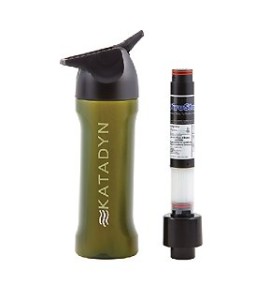
The Katadyn MyBottle uses a combination of filtration and iodine purification, to remove particles, and kill whatever microorganisms are inside. This is highly effective, but means the water will taste like iodine. This used to be the standard method for hikers everywhere, but some of the newer models, such as those listed above, manage the same level of safety without any added chemicals, which is likely to be a preferable solution for most people.
But it works, so I’m including it here, as it came in quite handy for me on trips through Eastern Europe and South America, and it’s quite simple. Besides, I don’t think it tasted so bad. I think it has been bested by some of the newer models out there, both in terms of non-iodine performance and cost-effectiveness, but it’s still quite functional, particularly if you use it only occasionally, in which case its moderately-cost-effective performance won’t add up too much.
- Unit price: $60
- Replacement parts: $35 per cartridge
- Lifespan: 150 liters
- Initial water treatment cost: $0.40 per liter
- Recurring water treatment cost (cartridges): $0.23 per liter
- Empty weight: 10 ounces (283 grams)
Buy it here.
If you DON’T need total purification
So this probably sounds horrifying, but there are a couple systems worth mentioning that only provide partial filtration, specifically focusing on removing biological contamination, which is the type of thing that works perfectly fine for hikers, but is not necessarily ideal for travelers, who will run into metallic tap water and maybe a virus or two. But if you’re hiking in North America, these might work for you:
7) SteriPEN Water Purifier systems: $100 (depending on the model)
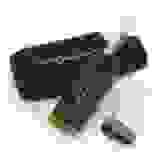
Although I much prefer all-in-one systems contained within the bottle, this is a popular device for backpackers all over the world, so I thought I’d discuss it here.
The important thing to remember is that the SteriPEN kills the microorganisms in the water with UV light, but does not actually remove them; it’ll be safe, but you’ll drink them right up. This also means it won’t remove chemicals, metals, particles, or anything else.
It’s possible to combine this with extremely cheap carbon filter bottles, which only remove large particles and certain chemicals, and thus combining them together would provide a more complete system. The Camelbak Groove and Brita water bottles come to mind.
You also need to use clear water, because the UV light will get blocked by sediment. You really don’t want to use this on muddy water, ever. You don’t want to use any filter with muddy water, but the other filters will actually clean it, which will damage the lifespan of the filter, but drinking muddy water with a SteriPEN might damage the lifespan of you.
The SteriPEN claims battery life long enough to clean 100 liters with 4 AA lithium batteries (about $2 each), which could be even cheaper with rechargeables (seriously, why does no one use rechargeable batteries?). The manufacturer will replace the bulb for $60, so the combined cost is still fairly cost-effective over long periods, but again, you’d need a separate filter if you wanted to remove metals, chemicals, and other stuff.
- Unit price: $100
- Replacement parts: $60 bulb, batteries of varying cost
- Lifespan: Approximately 8,000 liters (bulb lifespan)
- Initial water treatment cost (SteriPEN + 4 AA lithium batteries): $1.08 per liter
- Recurring water treatment cost (batteries + bulbs): $0.10 per liter
- Weight: 4 to 8 ounces with batteries, depending on the model (115 to 230 grams)
Buy it here.
8) The Sawyer Filter Bottle: $50
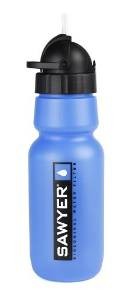
I have pointed out on many occasions that if you are only hiking in North America (and other places where viruses aren’t a problem), this is probably the best option out there.
The Sawyer bottle has a 0.1 micron filter size, which is good for everything biological except viruses, and it won’t handle chemicals, either, so it’s no good for low-quality tap water; but it’ll handle 99.99999% of bacteria, along with other bacterially-sized microorganisms (cysts, protozoa, etc), which works just fine for filling up from a river in the mountains, and is guaranteed to last for 3.7 million liters (minor note: these claims have been put to the test, and have been shown to come up short; it’s probably best to replace the filter long before the lifespan guarantee runs out).
There’s the arguable advantage of having something all-in-one, which can handle hiking and international travel and icky tap water, and some people might prefer that sort of minimalism; but if all you need is something for outdoorsy North American recreation, this is a good one.
- Unit price: $50 (though frequently found on sale)
- Replacement parts: None; buy the whole thing again
- Lifespan: 3.7 million liters (as mentioned, this claim is not sufficiently backed with evidence; it’s probably best to use it for a few months, just like the others)
- Initial water treatment cost: $0.000013/liter
- Recurring water treatment cost: $0.000013 per liter (as mentioned, it won’t last as long as they say, so this number should really be much higher)
- Weight: 5.5 ounces (155 grams)
Get it here.
There’s an in-line filter as well, for attaching to a hydration bladder, which offers the same performance.
Final thoughts
As you may have noticed, I’m a big fan of all-in-one designs. With the exception of specialized devices like the Sawyer Bottle and SteriPEN, all the options on this list can handle chemicals, bacteria and bacterially-sized things, and even those pesky little viruses (though with varying removal rates), though I would recommend using the ones with the highest removal rates if you’re going somewhere seriously questionable. Other pros and cons include some with great long-term cost-effectiveness, while others might offer swappable filters for low-grade filtration in less risky areas, and others might just fit better in your cup holder. A lot of this comes down to personal preference and ease of use, but performance is worth taking into consideration as well. But for reasons related to performance and ease of use, I’m sticking with the Grayl for now.

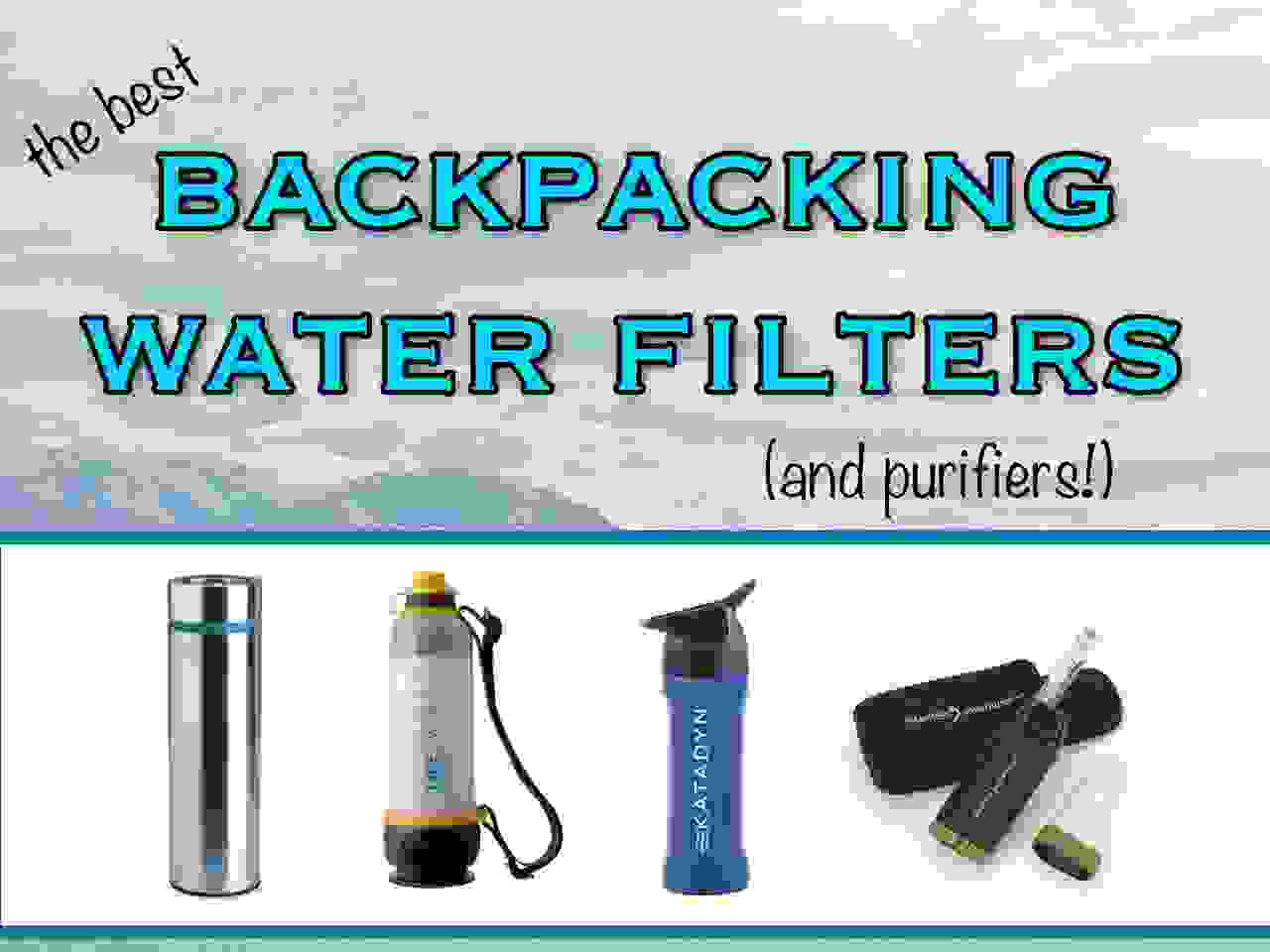



I know you have had rather snarky remarks about it before, yet the new LifeStraw bottle with carbon filtration is likely the best choice for explorers, hikers and trail runners in North America since it has both microscopic organisms/protozoa insurance and carbon filtration not at all like your pet Lifesaver.
If they’ve added a carbon filter, that’s good news. It’s a functionally designed product, but I hope people understand the limitations a little more clearly.
This is a great post.
I am going traveling aruond south east asia- looking to buy a bottle that I can fill up in taps that you wouldn’t normally drink out of.
My doctor recomenneded the Aquapure bottle- just wondering if you know whether there is the difference between this and the water to go?
Thanks,
Jessy
That’s one I haven’t seen before, but it mentions all the dangerous elements you’d want to remove, though it describes a different process for doing so (or at least, they use a different name). As long as it’s removing everything like that, then it’ll work. Just keep the mouthpiece clean, and bring some alcohol swabs to clean it up if necessary.
Let me give another vote for the the Grayl legend. I have crammed this on the back of a dirt bike to head way into the woods. It has taken massive abuse and still works great. For a solo Traveller in an area with readily available but non-potable water pack an extra filter and.maybe a second water bottle to fill. Now for multiple people or for cooking washing it’s not ideal.
If your willing to pony up some serious cash I also have this for bigger trips with more people:
https://www.backcountry.com/msr-guardian-purifier-system
Yeah, it’s much more of an individual system than a group system, but I tend to travel solo, which is why I love it. But the MSR is a good one for a big group, like hikers.
what do you think of the new Life Saver LIBERTY water bottle? (solves the issue of the bulkiness and i am pretty sure it has the same filtration capacity)
I am debating between that one and the Grayl
Thanks
Yes, Lifesaver is back! They had to go on a hiatus for a little while, but I’m glad they’re back. The Lifesaver is twice the weight of the Grayl, and bigger, but it has a longer-lasting filtration system (although it’s good to replace the carbon filters more frequently than the main system). Still, it’s an excellent long-term solution. Imagine someone doing Peace Corps work in Africa for two years. This would be perfect. For ultralight backpacking, or shorter trips, I might go with something lighter, like the Grayl.
do the lifesaver LIBERTY bottles spew out the water like a fountain? contrary to normal water bottles where you suck on the top to get the water out. Because that is kind of weird. I am thinking of getting a water bottle for normal use (so I can drink lake water) (or I am planning to go visit countries where the tap water may be sketchy to drink). In those situations, having a bottle that spews out the water is kind of annoying (how am I supposed to drink from that without it spilling over my clothes)
But then again, the Grayl has a really open mouth design and I wish they could make a adapter or something to go over the top so it is more like a water bottle mouthpiece then a big hole.
Do you think I should buy the Grayl for uses like I mentioned and get a lifesaver bottle just in case of a disaster or something where I cant get clean water. (if I keep an unopened lifesaver bottle, would it get messed up or should I be fine) Thanks again, your article and response is so helpful
The original did have the spewing problem, if you pumped it up too much, so I think you can get used to it with some practice, to figure out how much pressure you need to build up. But it also had a bite valve to prevent spills. I’m not sure exactly what the new one is doing, so I’ll have to keep an eye on it, but it looks quite similar from what I can see. And yes, the Grayl has that big, open design (and there’s some talk of an adapter to make it a smaller mouthpiece). It’s fine for everything but buses, and bicycles. Hopefully that’s helpful.
also, why is the lifesaver so much more expensive ($100 vs. $60) if those bottles both have the same filtering capabilities.
if the Grayl built more flimsy than the lifesaver ?
Also, would it be ok to buy the bottle and have it just in case a natural disaster happens? should I buy a couple of replacement filters just in case ?
Thanks so much you are so helpful
The Lifesaver’s filter has a lifespan of 2000 liters, whereas the Grayl’s is 150. That’s pretty impressive, although with the Lifesaver it’s still a good idea to replace the carbon pre-filters (basically little disc-shaped sponges) every 100 liters, as they recommend. They’re super cheap, though, so it’s a better long-term cost saver. You wouldn’t need to replace the entire filter cartridge very often, so if you pick up a dozen of those little carbon pre-filters, you’d be set for a long time. Imagine drinking a liter a day, so it’ll last you 2000 days. That’s a pretty long time. I’d say convenience is kind of a draw, since the Grayl requires a press every time you fill up, whereas the Lifesaver requires pumping instead. The Grayl is a lot lighter though, so it wins on ease of portability, so it’s better for hiking and travel, while the Lifesaver wins on long-term cost and long-term use. If you want to buy something for a year-round trip, for example, the Lifesaver wouldn’t need you to pack extra filters (just the carbon pre-filters, which are light), whereas with the Grayl, it’s good for a trip of a couple months, whereas for a year-long trip you might need to bring 3 or 4 spare filters along, especially if you’re going somewhere hot. You need the spare pre-filters for the Lifesaver as well, but those are lighter by comparison, and pack down a little smaller, so I’d say the Lifesaver would win on a really long-term, round-the-world, year-long type of trip.
Oh, and the Grayl is super solid. It’s just a much simpler system, requiring user pressure, not a complex pump mechanism. The new Lifesaver Liberty actually looks like a soft-sided, rubbery type of plastic…but so far from the usage videos I can’t quite tell.
And Lifestraw Go Bottle???